Chengzhi Ma
DPF-Net: Physical Imaging Model Embedded Data-Driven Underwater Image Enhancement
Mar 16, 2025Abstract:Due to the complex interplay of light absorption and scattering in the underwater environment, underwater images experience significant degradation. This research presents a two-stage underwater image enhancement network called the Data-Driven and Physical Parameters Fusion Network (DPF-Net), which harnesses the robustness of physical imaging models alongside the generality and efficiency of data-driven methods. We first train a physical parameter estimate module using synthetic datasets to guarantee the trustworthiness of the physical parameters, rather than solely learning the fitting relationship between raw and reference images by the application of the imaging equation, as is common in prior studies. This module is subsequently trained in conjunction with an enhancement network, where the estimated physical parameters are integrated into a data-driven model within the embedding space. To maintain the uniformity of the restoration process amid underwater imaging degradation, we propose a physics-based degradation consistency loss. Additionally, we suggest an innovative weak reference loss term utilizing the entire dataset, which alleviates our model's reliance on the quality of individual reference images. Our proposed DPF-Net demonstrates superior performance compared to other benchmark methods across multiple test sets, achieving state-of-the-art results. The source code and pre-trained models are available on the project home page: https://github.com/OUCVisionGroup/DPF-Net.
Depth-Assisted Network for Indiscernible Marine Object Counting with Adaptive Motion-Differentiated Feature Encoding
Mar 11, 2025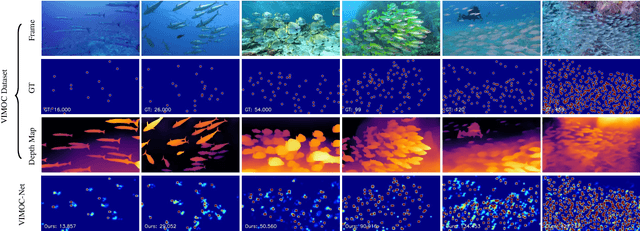
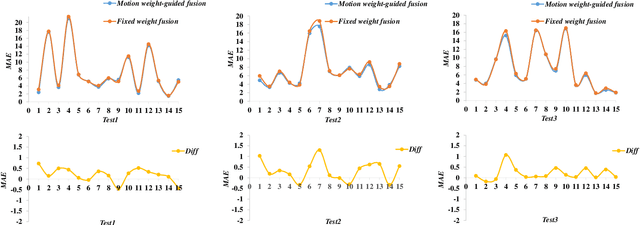
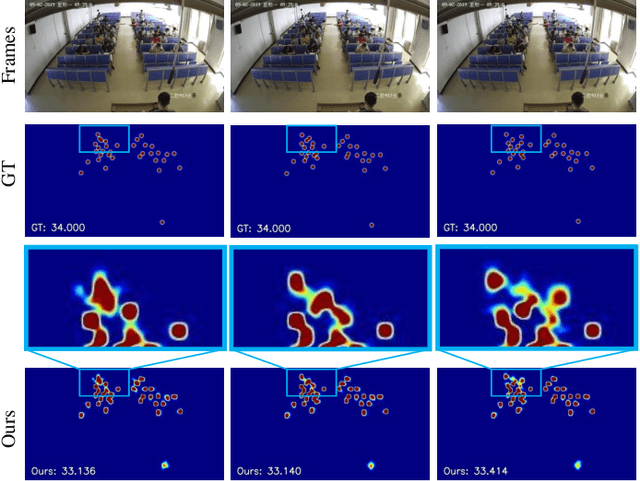
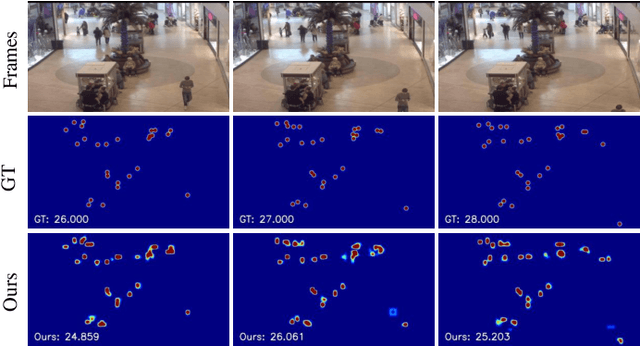
Abstract:Indiscernible marine object counting encounters numerous challenges, including limited visibility in underwater scenes, mutual occlusion and overlap among objects, and the dynamic similarity in appearance, color, and texture between the background and foreground. These factors significantly complicate the counting process. To address the scarcity of video-based indiscernible object counting datasets, we have developed a novel dataset comprising 50 videos, from which approximately 800 frames have been extracted and annotated with around 40,800 point-wise object labels. This dataset accurately represents real underwater environments where indiscernible marine objects are intricately integrated with their surroundings, thereby comprehensively illustrating the aforementioned challenges in object counting. To address these challenges, we propose a depth-assisted network with adaptive motion-differentiated feature encoding. The network consists of a backbone encoding module and three branches: a depth-assisting branch, a density estimation branch, and a motion weight generation branch. Depth-aware features extracted by the depth-assisting branch are enhanced via a depth-enhanced encoder to improve object representation. Meanwhile, weights from the motion weight generation branch refine multi-scale perception features in the adaptive flow estimation module. Experimental results demonstrate that our method not only achieves state-of-the-art performance on the proposed dataset but also yields competitive results on three additional video-based crowd counting datasets. The pre-trained model, code, and dataset are publicly available at https://github.com/OUCVisionGroup/VIMOC-Net.
Robust Beamforming Design and Antenna Selection for Dynamic HRIS-aided Massive MIMO Systems
Mar 31, 2024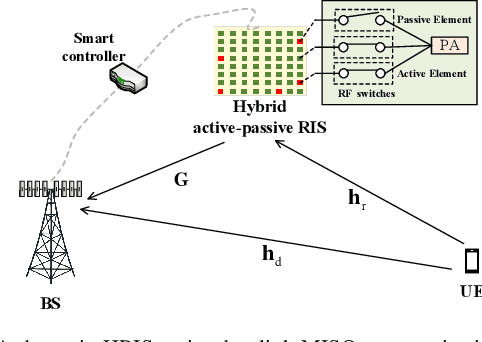
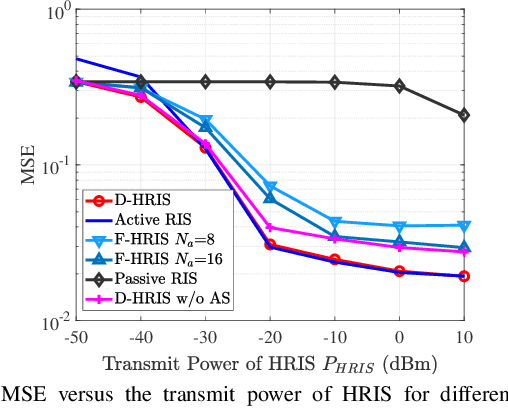
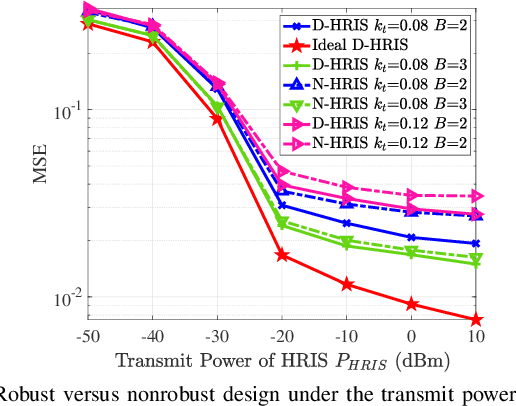
Abstract:In this paper, a dynamic hybrid active-passive reconfigurable intelligent surface (HRIS) is proposed to further enhance the massive multiple-input-multiple-output (MIMO) system, since it supports the dynamic placement of active and passive elements. Specifically, considering the impact of the hardware impairments (HWIs), we investigate the channel-aware configuration of the receive antennas at the base station (BS) and the active/passive elements at the HRIS to improve the reliability of system. To this end, we investigate the average mean-square-error (MSE) minimization problem for the HRIS-aided massive MIMO system by jointly optimizing the BS receive antenna selection matrix, the reflection phase coefficients, the reflection amplitude matrix, and the mode selection matrix of the HRIS under the power budget of the HRIS. To tackle the non-convexity and intractability of this problem, we first transform the binary and discrete variables into continuous ones, and then propose a penalty-based exact block coordinate descent (BCD) algorithm to solve these subproblems alternately. Numerical simulations demonstrate the great superiority of the proposed scheme over the conventional benchmark schemes.
Joint Beamforming Optimization and Mode Selection for RDARS-aided MIMO Systems
Jan 20, 2024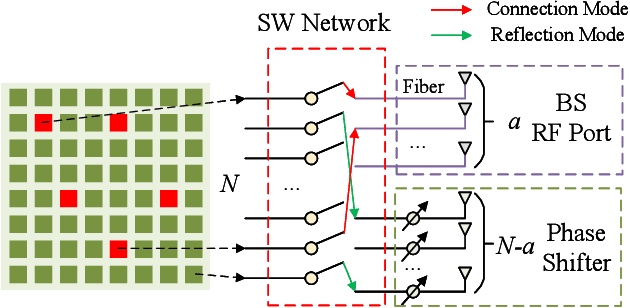
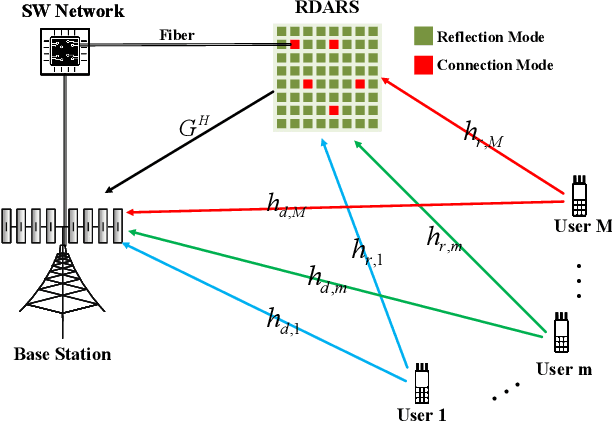
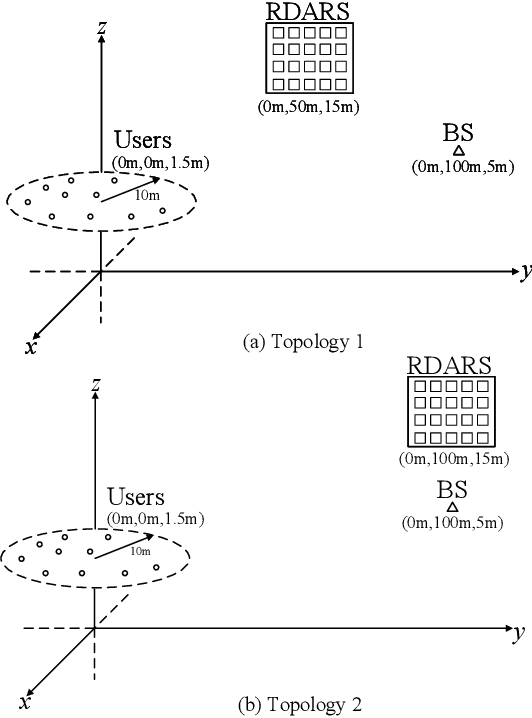
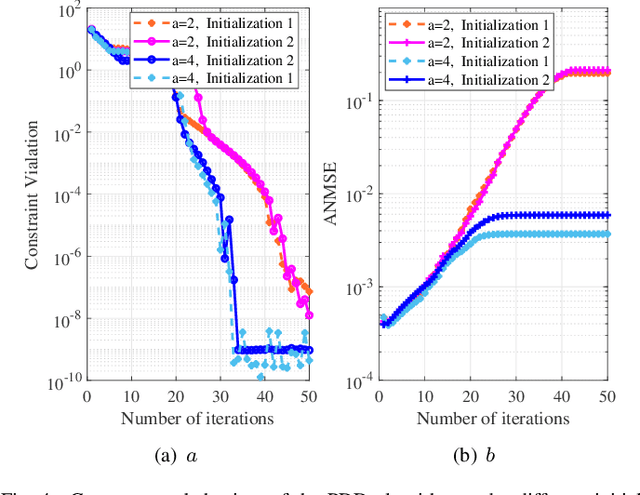
Abstract:Considering the appealing distribution gains of distributed antenna systems (DAS) and passive gains of reconfigurable intelligent surface (RIS), a flexible reconfigurable architecture called reconfigurable distributed antenna and reflecting surface (RDARS) is proposed. RDARS encompasses DAS and RIS as two special cases and maintains the advantages of distributed antennas while reducing the hardware cost by replacing some active antennas with low-cost passive reflecting surfaces. In this paper, we present a RDARS-aided uplink multi-user communication system and investigate the system transmission reliability with the newly proposed architecture. Specifically, in addition to the distribution gain and the reflection gain provided by the connection and reflection modes, respectively, we also consider the dynamic mode switching of each element which introduces an additional degree of freedom (DoF) and thus results in a selection gain. As such, we aim to minimize the total sum mean-square-error (MSE) of all data streams by jointly optimizing the receive beamforming matrix, the reflection phase shifts and the channel-aware placement of elements in the connection mode. To tackle this nonconvex problem with intractable binary and cardinality constraints, we propose an inexact block coordinate descent (BCD) based penalty dual decomposition (PDD) algorithm with the guaranteed convergence. Since the PDD algorithm usually suffers from high computational complexity, a low-complexity greedy-search-based alternating optimization (AO) algorithm is developed to yield a semi-closed-form solution with acceptable performance. Numerical results demonstrate the superiority of the proposed architecture compared to the conventional fully passive RIS or DAS. Furthermore, some insights about the practical implementation of RDARS are provided.
Reconfigurable Distributed Antennas and Reflecting Surface (RDARS): A New Architecture for Wireless Communications
Mar 13, 2023
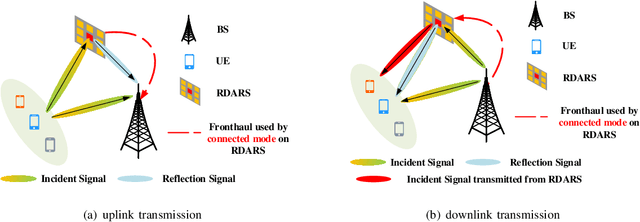
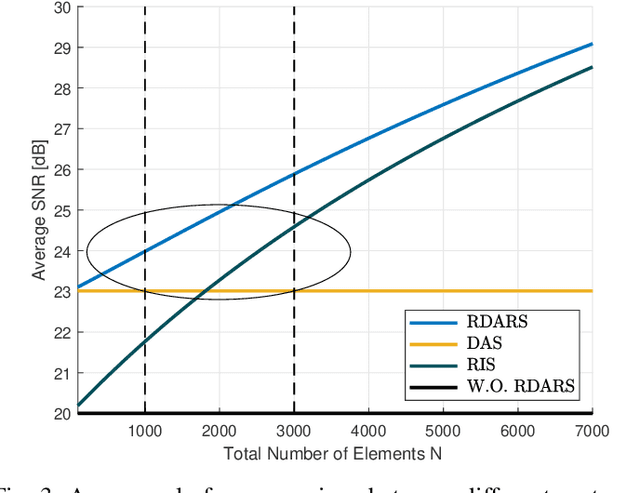
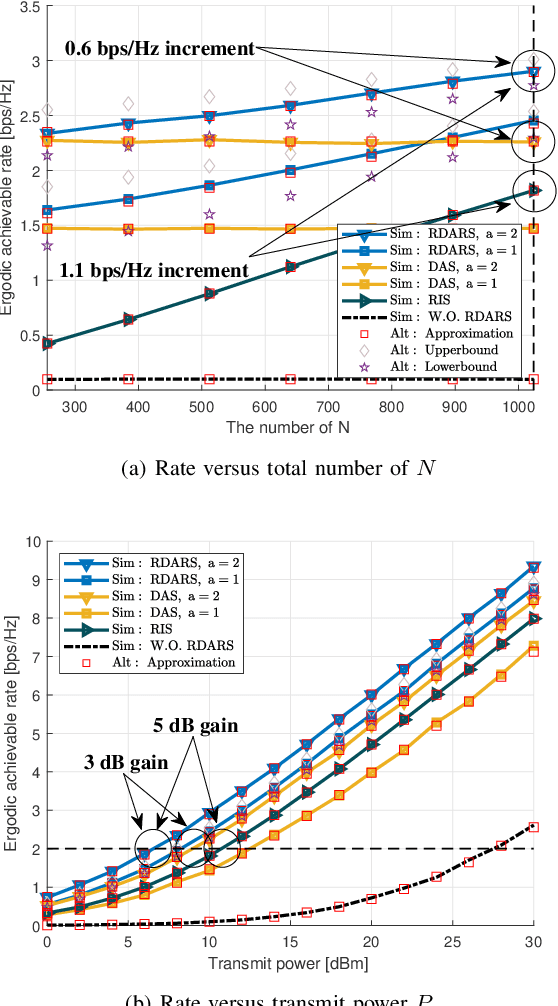
Abstract:Reconfigurable intelligent surfaces (RISs) have drawn much attention recently for their appealing advantages in shaping wireless channels to improve the spectral and energy efficiencies of wireless communications. However, conventional fully-passive RISs generally suffer from the so-called ``multiplicative fading'' effect which thereby limits RISs' practicability and manufacturability. In this paper, a novel architecture of ``Reconfigurable Distributed Antennas and Reflecting Surfaces (RDARS)'' is first proposed to overcome this limitation from the ``multiplicative fading'' effect. Specifically, unlike existing active RIS variants, RDARS inherits the low-cost and low-energy-consumption benefits of fully-passive RISs by default configuring all the elements as passive to perform the reflection mode. On the other hand, based on the design of the additional direct-through state, any element of the RDARS can be dynamically programmed to connect with the base station (BS) via fibers and perform the connected mode as remote distributed antennas of the BS to receive signals. Consequently, a controllable trade-off between the reflection gain and the distribution gain can be achieved via RDARS at the BS. To unveil the system behavior of the RDARS-aided system, we analyze the received signal-to-noise ratio (SNR) under maximum ratio combining (MRC) at BS. Closed-form outage probability and ergodic achievable rate are also provided and are verified through extensive simulations. To demonstrate the superiority of the proposed RDARS, experiments are carried out using a prototype of RDARS with a total number of 256 elements which revealed extra 76% throughput improvement could be achieved by deploying RDARS with only three elements performing connected mode. This thus confirms the effectiveness of the proposed RDARS and envisions it as a promising candidate for future 6G wireless systems.
 Add to Chrome
Add to Chrome Add to Firefox
Add to Firefox Add to Edge
Add to Edge